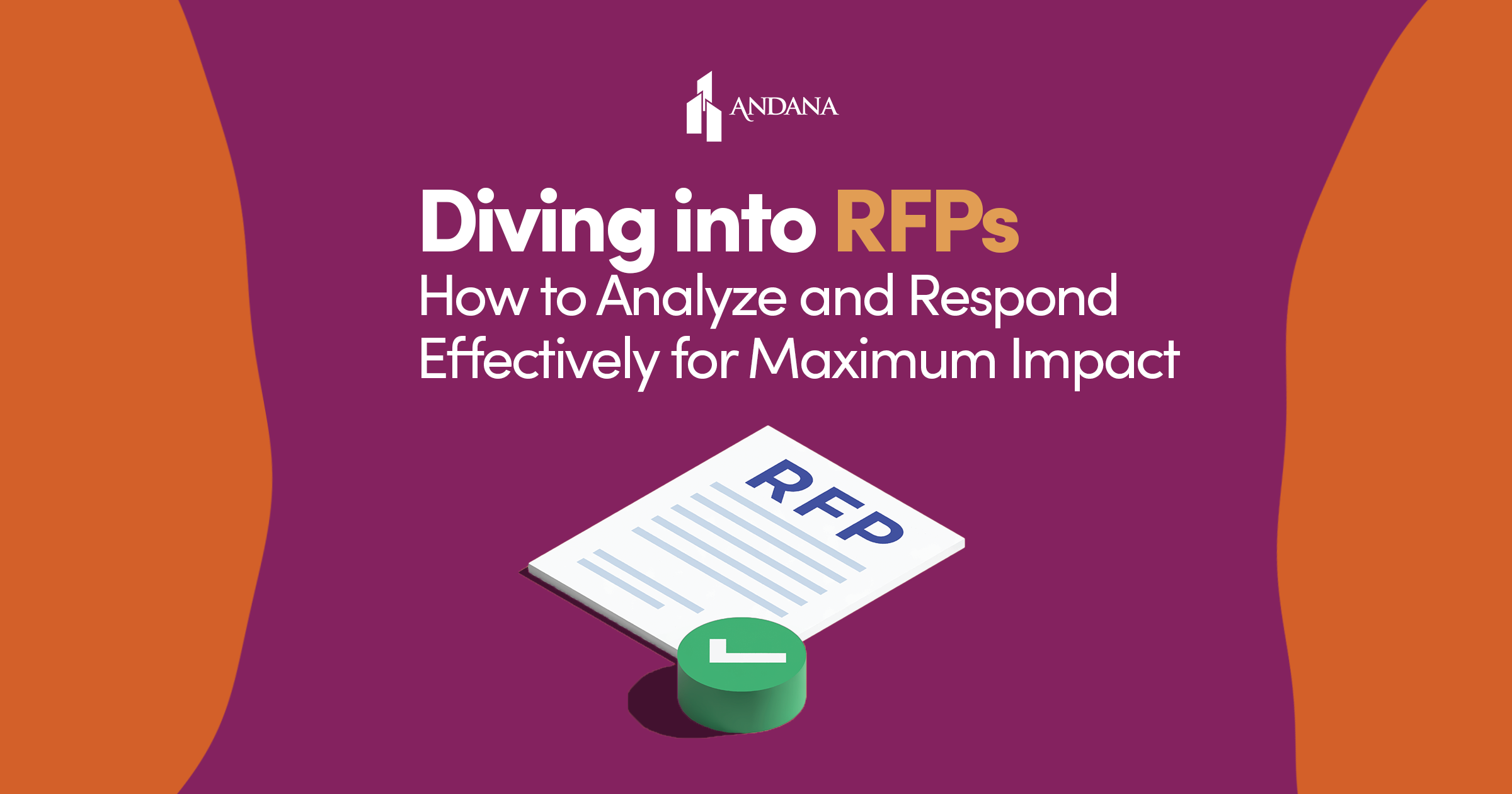
Requests for Proposals (RFPs) are the gateways to securing government contracts. This blog post dives into the art of analyzing and responding to RFPs effectively. Understand the key components of successful RFP responses, decode complex requirements, and gain insights into crafting compelling proposals that make a lasting impact.
Diving into RFPs: How to Analyze and Respond Effectively for Maximum Impact
In the world of government contracting, Requests for Proposals (RFPs) serve as the gateway to securing lucrative contracts. Effectively navigating the intricacies of RFPs is not just a skill; it’s an art that requires a strategic approach, attention to detail, and a commitment to delivering maximum impact. In this guide, we’ll delve into the latest insights and strategies for analyzing and responding to RFPs with precision, ensuring your proposals stand out in a competitive landscape.
The Evolving Landscape of RFPs
As the landscape of government contracting evolves, so do RFPs. Agencies are increasingly seeking innovative solutions, streamlined processes, and tangible value from their contractors. Analyzing and responding to RFPs in 2024 requires a nuanced understanding of emerging trends and a commitment to exceeding the expectations outlined in the solicitation.
- Integrating Innovation into Your Response
In 2024, agencies are placing a heightened emphasis on innovation and creativity – while still being compliant with the scope of work. Proposals that go beyond meeting the basic requirements and showcase innovative approaches are more likely to capture attention. Consider integrating technological advancements, unique methodologies, or creative solutions that set your solution apart.
- Focus on Measurable Outcomes
Agencies are increasingly seeking measurable outcomes and tangible results from their contractors. When analyzing an RFP, pay close attention to the desired outcomes outlined by the agency. Structure your response in a way that clearly articulates how your solution will deliver quantifiable and impactful results.
- Demonstrating Digital Competence
The push for digital transformation is evident in RFPs across various industries. Agencies are seeking contractors with a demonstrated ability to leverage technology for enhanced efficiency. In your response, highlight your digital capabilities, use of advanced tools, and commitment to streamlining processes through technological solutions.
Strategies for Analyzing RFPs Effectively
- Thorough RFP Deconstruction Using Advanced RFP Analysis Tools
Before crafting your response, undergo a thorough deconstruction of the RFP. Beyond traditional methods, utilize advanced RFP analysis tools that can extract key insights, identify hidden requirements, and provide a comprehensive understanding of the agency’s needs. Tools like RFP360 and VisibleThread offer advanced features for RFP analysis.
- Strategic Questioning and Clarifications
Don’t hesitate to seek clarifications on ambiguous or unclear aspects of the RFP. Craft strategic questions that not only seek information but also demonstrate your understanding of the requirements. Agencies appreciate contractors who proactively seek clarity, showcasing their commitment to delivering a well-informed proposal.
- Harnessing Competitive Intelligence Tools
Analyzing competitors is a crucial aspect of RFP preparation. Leverage competitive intelligence tools to gain insights into the strategies, strengths, and weaknesses of your competitors. Free tools like SAM.gov and FPDS.gov provide competitive intelligence, allowing you to tailor your proposal for maximum competitiveness.
- Alignment with Agency Objectives
Ensure that every element of your response aligns with the broader objectives of the agency. Beyond meeting specific requirements, demonstrate a clear understanding of the agency’s mission, goals, and strategic priorities. Aligning your proposal with the agency’s objectives enhances its overall impact and relevance.
Crafting a High-Impact Response
- Incorporating Visual Elements for Clarity – the USA Today Approach
Clearly articulate your value proposition in your response. Use concise language and consider incorporating visual elements such as infographics or diagrams to enhance clarity. Visual elements not only make your proposal more engaging but also facilitate a quick understanding of complex concepts. Aiming for one graphic per page is a good goal, but not always attainable given page counts or margin constraints. In that case, incorporate distinct headlines and subheadings and bulleted lists to make it easy to ready and find information. Make sure your graphics support your narrative and aren’t just added to “break up the text,” rather, added to highlight what you want the readers to take away from the narrative.
- Evidence-Based Approach
Support your claims and assertions with concrete evidence. Whether it’s showcasing past performance, providing case studies, or presenting data-driven insights, an evidence-based approach adds credibility to your response. Agencies value proposals that substantiate promises with tangible proof of capability.
- Emphasizing Collaborative Capabilities
In an era of increasing collaboration, emphasize your ability to work in partnership with the agency. Showcase collaboration tools, methodologies, and a collaborative mindset within your organization. Highlighting your commitment to a collaborative approach fosters a positive impression with the agency.
- Strategic Pricing and Costing
Strategic pricing is a crucial component of a high-impact response. Ensure that your pricing structure aligns with the value you’re offering. Be transparent in your costing approach, clearly outlining the value proposition and cost-effectiveness of your solution. Utilize pricing models that provide flexibility and demonstrate an understanding of the agency’s budget constraints.
Effectively analyzing and responding to RFPs requires more than just meeting requirements; it demands a strategic and forward-thinking approach. By staying abreast of evolving trends, leveraging advanced tools, and crafting responses that showcase innovation and value, government contractors can position themselves for success in the competitive landscape of government contracting.
